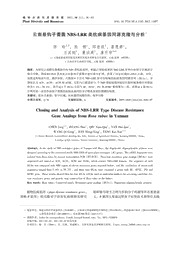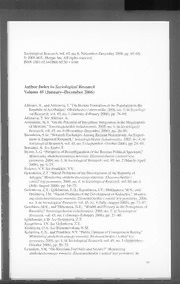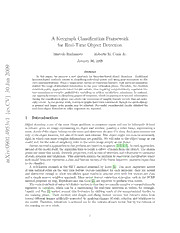
A Keygraph Classification Framework for Real-Time Object Detection PDF
Preview A Keygraph Classification Framework for Real-Time Object Detection
A Keygraph Classification Framework for Real-Time Object Detection Marcelo Hashimoto Roberto M. Cesar Jr. January 30, 2009 9 0 0 Abstract 2 In this paper, we propose a new approach for keypoint-based object detection. Traditional n keypoint-based methods consist in classifying individual points and using pose estimation to dis- a cardmisclassifications. Sinceasinglepointcarriesnorelationalfeatures,suchmethodsinherently J restrict the usage of structural information to the pose estimation phase. Therefore, the classifier 0 considers purely appearance-based feature vectors, thus requiring computationally expensive fea- 3 tureextractionorcomplexprobabilisticmodellingtoachievesatisfactoryrobustness. Incontrast, ourapproachconsistsinclassifyinggraphsofkeypoints,whichincorporatesstructuralinformation ] V during the classification phase and allows the extraction of simpler feature vectors that are natu- rallyrobust. Inthepresentwork,3-verticesgraphshavebeenconsidered,thoughthemethodology C is general and larger order graphs may be adopted. Successful experimental results obtained for . s real-time object detection in video sequences are reported. c [ 1 Introduction 1 v 3 Object detection is one of the most classic problems in computer vision and can be informally defined 5 as follows: given an image representing an object and another, possibly a video frame, representing a 9 scene,decideiftheobjectbelongstothesceneanddetermineitspose ifitdoes. Suchposeconsistsnot 4 onlyoftheobjectlocation,butalsoofitsscaleandrotation. Theobjectmightnotevenbenecessarily . 1 rigid, in which case more complex deformations are possible. We will refer to the object image as our 0 model and, for the sake of simplicity, refer to the scene image simply as our frame. 9 Recentsuccessfulapproachestothisproblemarebasedonkeypoints [5,1,4,6]. Insuchapproaches, 0 : insteadofthemodelitself,thealgorithmtriestolocateasubsetofpointsfromtheobject. Thechosen v pointsarethosethatsatisfydesirableproperties,suchaseaseofdetectionandrobustnesstovariations i X ofscale,rotationandbrightness. Thisapproachreducestheproblemtosupervised classification where r eachmodelkeypointrepresentsaclassandfeaturevectorsoftheframekeypointsrepresentinputdata a to the classifier. A well-known example is the SIFT method proposed by Lowe [5]. The most important aspect of this method relies on the very rich feature vectors calculated for each keypoint: they are robust and distinctive enough to allow remarkably good results in practice even with few vectors per class and a simple nearest-neighbor approach. More recent feature extraction strategies, such as the SURF method proposed by Bay, Tuytelaars and van Gool [1], are reported to perform even better. Themaindrawbackofusingrichfeaturevectorsisthattheyareusuallycomplexorcomputationally expensive to calculate, which can be a shortcoming for real-time detection in videos, for example. Lepetit and Fua [4] worked around this limitation by shifting much of the computational burden to the training phase. Their method uses simple and cheap feature vectors, but extracts them from several different images artificially generated by applying changes of scale, rotation and brightness to the model. Therefore, robustness is achieved not by the richness of each vector, but by the richness of the training set as a whole. 1 Training 1. Detectkeypointsinthemodel. 2. Extractfeaturevectorsfromeachkeypoint. 3. Usethefeaturevectorstotrainaclassifierwhoseclassesarethekeypoints. Theaccuracymustbereasonablyhigh,butnotnecessarilynear-perfect. Classification 1. Detectkeypointsintheframe. 2. Extractfeaturevectorsfromeachkeypoint. 3. Apply the classifier to the feature vectors in order to decide if each frame keypoint is sufficiently similar to a model keypoint. As near-perfect accu- racyisnotrequired,severalmisclassificationsmightbedoneinthisstep. 4. Use an estimation algorithm to determine a pose spatially coherent with a large enough number of classifications made during the previous step. Classificationsdisagreeingwithsuchposearediscardedasoutliers. Figure 1: Traditional framework for keypoint-based object detection. Regardlessthechoiceamongmostofsuchmethods,keypoint-basedapproachestraditionallyfollow the same general framework, described in Figure 1. A shortcoming of this framework is that structural information, such as geometric and topological relations between the points, only play a role in the pose estimation step: they are completely absent of all classification steps. Therefore, the entire burden of describing a keypoint lies on individual appearance information, such as the color of pixels close to it. Recently, O¨zuysal, Fua and Lepetit [6] proposed a less individual approach by defining a probabilistic modelling scheme where small groups ofkeypointsareconsidered. However,sinceapurelyappearance-basedfeaturevectorsetisusedunder this model, there is still an underuse of structure in their approach. In this paper, we propose an alternative framework that, instead of classifying single keypoints, classifies sets of keypoints using both appearance and structural information. Since graphs are math- ematical objects that naturally model relations, they are adopted to represent such sets. Therefore, theproposed approachisbasedonsupervisedclassification ofgraphsof keypoints, henceforthreferred as keygraphs. A general description of our framework is given by Figure 2. The idea of using graphs built from keypoints to detect objects is not new: Tang and Tao [9] had success with dynamic graphs defined over SIFT points. Their work, however, shifts away from the classificationapproachandtriestosolvetheproblemwithgraph matching. Ourapproach,incontrast, still reduces the problem to supervised classification, which is more efficient. In fact, it can be seen as a generalization of the traditional methods, since a keypoint is a single-vertex graph. This paper is organized as follows. Section 2 introduces the proposed framework, focusing on the advantages of using graphs instead of points. Section 3 describes a concrete implementation of the framework, where 3-vertices keygraphs are used, and some successful experimental results that this implementation had for real-time object detection. Finally, in Section 4 we present our conclusions. 2 Keygraph Classification Framework A graph is a pair (V,E), where V is an arbitrary set, E ⊆(cid:0)V(cid:1) and (cid:0)V(cid:1) denotes the family of all subsets 2 2 of V with cardinality 2. We say that V is the set of vertices and E is the set of edges. We also say that the graph is complete if V =(cid:0)V(cid:1) and that (V(cid:48),E(cid:48)) is a subgraph of (V,E) if V(cid:48) ⊆V and E(cid:48) ⊆E ∩(cid:0)V(cid:48)(cid:1). 2 2 Given a set S, we denote by G(S) the complete graph whose set of vertices is S. Those definitions allow us to easily summarize the difference between the traditional and the 2 Training 1. Detectkeypointsinthemodel. 2. Build a set of keygraphs whose vertices are the detected keypoints. 3. Extractfeaturevectorsfromeachkeygraph. 4. Usethefeaturevectorstotrainaclassifierwhoseclassesarethekeygraphs. Theaccuracymustbereasonablyhigh,butnotnecessarilynear-perfect. Classification 1. Detectkeypointsintheframe. 2. Build a set of keygraphs whose vertices are the detected keypoints. 3. Extractfeaturevectorsfromeachkeygraph. 4. Apply the classifier to the feature vectors in order to decide if each frame keygraph issufficientlysimilartoamodelkeygraph. Asnear-perfectaccu- racyisnotrequired,severalmisclassificationsmightbedoneinthisstep. 5. Use an estimation algorithm to determine a pose spatially coherent with a large enough number of classifications made during the previous step. Classificationsdisagreeingwithsuchposearediscardedasoutliers. Figure 2: Proposed framework with the main differences emphasized. Figure 3: Even a very simple graph with three vertices has a large number of subgraphs. proposed frameworks. Both have the same outline: define certain universe sets from the model and the frame, detect key elements from those sets, extract feature vectors from those elements, train a classifier with the model vectors, apply the classifier to the frame vectors and analyze the result with a pose estimation algorithm. The main difference lies on the first step: defining the universe set of an image. In the traditional framework, since the set of keypoints K represents the key elements, this universeisthesetofallimagepoints. Intheproposedframework,whilethedetectionofKremains,the universeisthesetofallsubgraphsofG(K). Inthefollowingsubsections, wedescribethefundamental advantages of such difference in three steps: the key element detection, the feature vector extraction and the pose estimation. 2.1 Keygraph Detection As it can be seen on Figure 3, one of the most evident differences between detecting a keypoint and detecting a keygraph is the size of the universe set: the number of subgraphs of G(K) is exponential on the size of K. This implies that a keygraph detector must be much more restrictive than a keypoint detector if we are interested in real-time performance. Such necessary restrictiveness, however, is not hard to obtain because graphs have structural properties to be explored that individual keypoints do not. Those properties can be classified in three types: combinatorial, topological and geometric. Figure 4 shows how those three types of structural properties can be used to gradually restrict the number of 3 a) b) c) Figure 4: Gradual restriction by structural properties. Column (a) shows two graphs with different combinatorial structure. Column (b) shows two graphs combinatorially equivalent but topologically different. Finally,column(c)showstwographswiththesamecombinatorialandtopologicalstructure, but different geometric structure. (a) (b) Figure 5: Model keygraph (a) and a frame keygraph (b) we want to classify. From the topological structure alone we can verify that the latter cannot be matched with the former: the right graph does not have a vertex inside the convex hull of the others. Furthermore, translating this simple boolean property into a scalar value does not make much sense. considered graphs. 2.2 Partitioning the Feature Vectors A natural approach for extracting feature vectors from keygraphs is by translating all the keygraph properties, regardless if they are structural or appearance-based, into scalar values. However, a more refined approach that allows to take more advantage of the power of structural information has been adopted. Thisapproachconsistsinkeepingthefeaturevectorsthemselvesappearance-based,butpartitioning the set of vectors according to structural properties. There are two motivations for such approach: the first one is the fact that a structural property, alone, may present a strong distinctive power. The second one is the fact that certain structural properties may assume boolean values for which a translation to a scalar does not make much sense. Figure 5 gives a simple example that illustrates the two motivations. Bytrainingseveralclassifiers,oneforeachsubsetgivenbythepartition,insteadofjustone,wenot only satisfy the two motivations above, but we also improve the classification from both an accuracy and an efficiency point of view. 2.3 Naturally Robust Features For extracting a feature vector from a keygraph, there exists a natural approach by merging multiple keypointfeaturevectorsextractedfromitsvertices. However,amorerefinedapproachmaybederived. In traditional methods, a keypoint feature vector is extracted from color values of the points that 4 Figure 6: Lack of robustness from patch methods. The keypoints are the same in both images, but the small change in scale and rotation gives completely different patches. Figure 7: An example of relative feature extraction. Both keygraphs consist of two keypoints and the edge between them. Suppose there is no variation of brightness between the two images and consider for each keygraph the mean gray level relative to all image pixels crossed by its edge. Regardless of scale and rotation, there should be no large variations between the two means. Therefore, they represent a naturally robust feature. belong to a certain patch around it. This approach is inherently flawed because, as Figure 6 shows, such patches are not naturally robust to scale and rotation. Traditional methods work around this flaw by improving the extraction itself. Lowe [5] uses a gradient histogram approach, while Lepetit and Fua [4] rely on the training with multiple sintethic views. With keygraphs, in contrast, the flaw does not exist in the first place, because they are built on sets of keypoints. Therefore, they allow the extraction of relative features that are naturally robust to scale and rotation without the need of sophisticated extraction strategies. Figure 7 shows a very simple example. 2.4 Pose Estimation by Voting A particular advantage of the SIFT feature extraction scheme relies on its capability of assigning, to each feature vector, a scale and rotation relative to the scale and rotation of the model itself. This greatly reduces the complexity of pose estimation because each keypoint classification naturally inducesaposethattheobjectmusthaveinthesceneifsuchclassificationiscorrect. Therefore,onecan obtainarobustposeestimationanddiscardclassifiererrorsbysimplyfollowingaHough[3]transform procedure: aquantizationofallpossibleposesismadeandeachevaluationfromtheclassifierregisters a vote for the corresponding quantized pose. The most voted pose wins. The same procedure can be used with keygraphs, because relative properties of a set of keypoints can be used to infer scale and rotation. It should be emphasized, however, that the viability of such strategy depends on how rich the structure of the considered keygraphs is. Figure 8 has a simple example of how a poorly chosen structure can cause ambiguity during the pose estimation. 5 Figure 8: Example of pose estimation ambiguity. The white rectangle indicates the pose of a certain 2-vertex graph in a frame. If a classifier evaluates this graph as being the model keygraph indicated in Figure 7, there would be two possible coherent rotations. Figure 9: Result of the good features to track algorithm. 3 Implementation and Results In this section we will present the details of an implementation of the proposed framework that was madeinC++withtheOpenCV[8]library. Toillustrateourcurrentresultswiththisimplementation, wedescribeanexperimentonwhichweattemptedtodetectabookinreal-timewithawebcam, while varying its position, scale and rotation. We ran the tests in an Intel(cid:13)R CoreTM 2 Duo T7250 with 2.00GHz and 2 GB of RAM. A 2-megapixel laptop webcam was used for the detection itself and to take the single book picture used during the training. 3.1 Good Features to Track Forkeypointdetectionweusedthewell-knowngoodfeaturestotrack detectorproposedbyShiandTomasi[7], that applies a threshold over a certain quality measure. By adjusting this threshold, we are able to control how rigid is the detection. A good balance between accuracy and efficiency was found in a threshold that gave us 79 keypoints in the model, as it can be seen on Figure 9. 6 θ 3 θ θ 1 2 Figure 10: Scalene triangle with θ < θ < θ . In this case, if we pass through the three vertices in 1 2 3 increasing order of internal angle, we have a counter-clockwise movement. Figure 11: Corner chrominance extraction. The gray segments define a limit for the size of the projected lines. The white points defining the extremities of those lines are positioned according to a fraction of the edge they belong to. In the above example the fraction is 1/3. 3.2 Thick Scalene Triangles For keygraph detection we selected 3-vertices complete graphs whose induced triangle is sufficiently thick and scalene. More formally, that means each one of the internal angles in the triangle should be larger than a certain threshold and the difference between any two internal angles is larger than another threshold. The rationale behind this choice is increasing structure richness: the vertices of a excessively thin triangle are too close of being collinear and high similarity between internal angles could lead to the pose estimation ambiguity problem mentioned in the previous section. Inourexperiment,weestablishedthatnointernalangleshouldhavelessthan5degreesandnopair of angles should have less than 5 degrees of difference. To avoid numerical problems, we also added that no pair of vertices should have less than 10 pixels of distance. Those three thresholds limited drastically the number of keygraphs: out of 79·78·77 = 474.474 possible 3-vertices subgraphs, the detector considered 51.002 keygraphs. The partitioning of the feature vector set is made according to three structural properties. Two of them are the values of the two largest angles. Notice that, since the internal angles of a triangle alwayssumupto180degrees, consideringallangleswouldberedundant. Thethirdpropertyrefersto a clockwise or counter-clockwise direction defined by the three vertices in increasing order of internal angle. Figure 10 has a simple example. In our experiment we established a partition in 2·36·36=2592 subsets: the angles are quantized by dividing the interval (0,180) in 36 bins. The largest subset in the partition has 504 keygraphs, a drastic reduction from the 51.002 possible ones. 3.3 Corner Chrominance Extraction Figure 11 illustrates the scheme for extracting a feature vector from a keygraph. Basically, the ex- traction consists in taking several internal segments and, for each one of them, to calculate the mean chrominance of all pixels intersected by the segment. 7 Figure 12: Results showing object detection robust to scale and rotation. The chrominance values are obtained by converting the model to the HSV color space and con- sidering only the hue and saturation components. The segments are obtained by evenly partitioning bundles of lines projected from the vertices. Finally, the size of those projected lines is limited by a segment whose extremities are points in the keygraph edges. This scheme is naturally invariant to rotation. Invariance to brightness is ensured by the fact that we are considering only the chrominance and ignoring the luminance. Finally, the invariance to scale is ensured by the fact that the extremities mentioned above are positioned in the edges according to a fraction of the size of the edge that they belong to, and not by any absolute value. 3.4 Results with Delaunay Triangulation We could not use, during the classification phase, the same keygraph detector we used during the training phase: it does not reduce enough the keygraph set size for real-time performance. We use an alternative detector that gives us a smaller subset of the set the training detector would give. ThisalternativedetectorconsistsinselectingthickscalenetrianglesfromaDelaunay triangulation of the keypoints. A triangulation is a good source of triangles because it covers the entire convex hull of the keypoints. And the Delaunay triangulation, in particular, can be calculated very efficiently, for example with the Θ(nlgn) Fortune [2] algorithm. Figure 12 shows some resulting screenshots. A full video can be seen at http://www.vision.ime.usp.br/~mh/gbr2009/book.avi. 4 Conclusion We presented a new framework for keypoint-based object detection that consists on classifying key- graphs. With an implementation of this framework, where the keygraphs are thick scalene triangles, we have shown successful results for real-time detection after training with a single image. The framework is very flexible and is not bounded to an specific keypoint detector or keygraph detector. Therefore, room for improvement lies on both the framework itself and the implementation of each one of its steps. We are currently interested in using more sophisticated keygraphs and in adding the usage of temporal information to adapt the framework to object tracking. Finally, we expect to cope with 3D poses (i.e. out-of-plane rotations) by incorporating aditional poses to the training set. These advances will be reported in due time. 8 Acknowledgments We would like to thank FAPESP, CNPq, CAPES and FINEP for the support. References [1] H. Bay, T. Tuytelaars, and Luc van Gool. SURF: Speeded Up Robust Features. In Proceedings of the Ninth European Conference on Computer Vision, pages 404–417. 2006. [2] S. Fortune. A sweepline algorithm for Voronoi diagrams. In Proceedings of the Second Annual Symposium on Computational Geometry, pages 313–322. 1986. [3] P.V.C.Hough. Methodandmeansforrecognizingcomplexpatterns. U. S. Patent 3069654,1962. [4] V.LepetitandP.Fua.Keypointrecognitionusingrandomizedtrees.IEEETransactionsonPattern Analysis and Machine Inteligence, 28(9):1465–1479, 2006. [5] D. Lowe. Distinctive image features from scale-invariant keypoints. International Journal of Com- puter Vision, 20(2):91–110, 2004. [6] M.O¨zuysal,P.Fua,andV.Lepetit. Fastkeypointrecognitionintenlinesofcode. InProceedingsof the 2007 IEEE Computer Society Conference on Computer Vision and Pattern Recognition, pages 1–8. 2007. [7] J. Shi and C. Tomasi. Good features to track. In Proceedings of the 1994 IEEE Computer Society Conference on Computer Vision and Pattern Recognition, pages 593–600. 1994. [8] SourceForge.net: Open Computer Vision Library. http://sourceforge.net/projects/opencvlibrary/. [9] F.TangandH.Tao. Objecttrackingwithdynamicfeaturegraph. In2ndJointIEEEInternational Workshop on Visual Surveillance and Performance Evaluation of Tracking and Surveillance,pages 25–32. 2005. 9
The list of books you might like

The Mountain Is You

The Strength In Our Scars

The Subtle Art of Not Giving a F*ck

The 48 Laws of Power

COMESA 273: Textile fibres - Determination of breaking force and elongation at break of individual fibres

COMESA 265-1: Textiles — Burning behaviour of bedding items —Part 1:General test methods for the ignitability by a smouldering cigarette
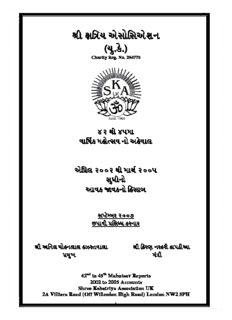
42-45 Mahotsav Reports
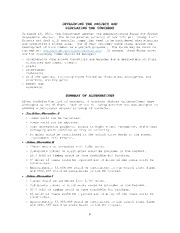
Three Creeks timber sale project final environmental impact statement

Illustrating Antichrist and the Day of Judgment in the Eighty-Nine Miniatures of Besançon, Bibliothèque Municipale MS 579
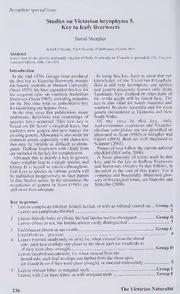
Studies on Victorian Bryophytes 5. Key to Leafy Liverworts
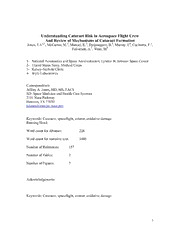
NASA Technical Reports Server (NTRS) 20060051793: Understanding Cataract Risk in Aerospace Flight Crew And Review of Mechanisms of Cataract Formation
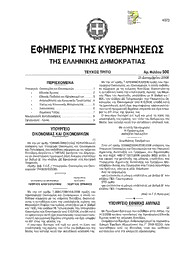
Greek Government Gazette: Part 3, 2006 no. 500
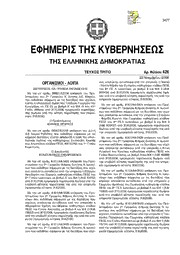
Greek Government Gazette: Part 3, 2006 no. 426

Called The Black Pope by many of his followers, Anton
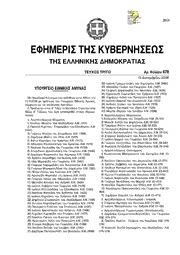
Greek Government Gazette: Part 3, 2006 no. 478
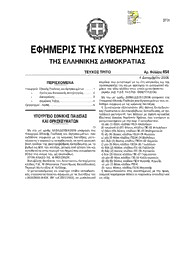
Greek Government Gazette: Part 3, 2006 no. 454
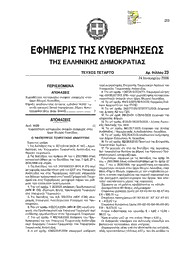
Greek Government Gazette: Part 4, 2006 no. 23

CACFP 2014 Manual PDF Copy.pdf - Alabama State Department of
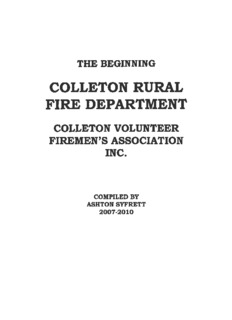
by Retired Chief Ashton Syfrett

